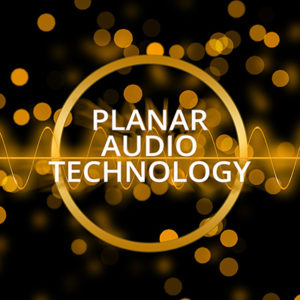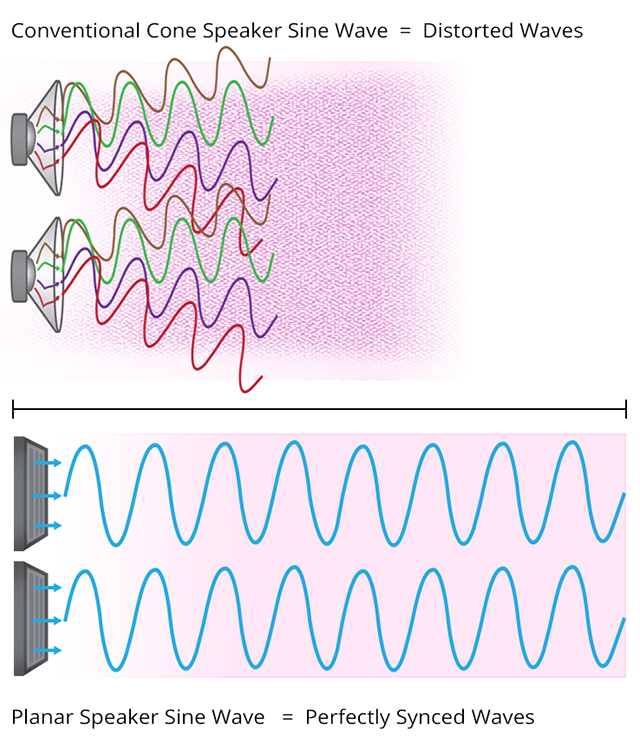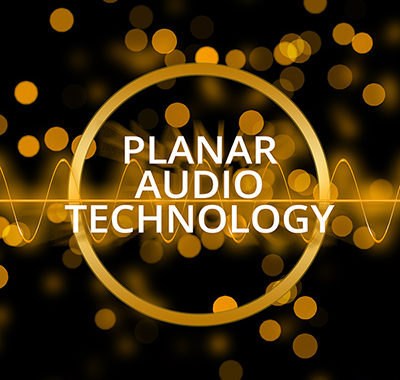 Planar technology has been around since the early 1930’s and has always been known for it’s ability to deliver clear and crisp sound. Over the years users of planar have been satisfied with the technology available and have incorporated planar devices into a variety of commercial and home audio products.
Planar technology has been around since the early 1930’s and has always been known for it’s ability to deliver clear and crisp sound. Over the years users of planar have been satisfied with the technology available and have incorporated planar devices into a variety of commercial and home audio products.
Unlike other planar companies, we’re not satisfied with the status quo and set out to develop a better planar device. With a team of engineers and physicists, we developed a new planar transducer, known as Clear Voice that is unmatched in performance and quality.
Reaching distances in excess of 2000 feet and able to broadcast an intelligible message 5 to 10 decibels below the ambient noise level, the Clear Voice transducer was tested by an independent laboratory recording a perfect score on the CIS intelligibility test. In a separate test using STIPA testing equipment, the Clear Voice transducer registered an Average High Background Noise STI improvement of 12.4% over a high fidelity line array reference speaker. When tested side-by-side with conventional horns, speakers and other planar devices.
 The professional sound industry relies on specifications and theories based on cone speaker technology, which is 180 degrees different from Clear Voice. Noise or dB level is still the same but everyone is forgetting about Clarity. A speaker can be loud but is it clear? Measurements of dB and SPL (Sound Pressure Level) are used improperly. In all cases, people want clarity not loud noise.
The professional sound industry relies on specifications and theories based on cone speaker technology, which is 180 degrees different from Clear Voice. Noise or dB level is still the same but everyone is forgetting about Clarity. A speaker can be loud but is it clear? Measurements of dB and SPL (Sound Pressure Level) are used improperly. In all cases, people want clarity not loud noise.
A similar correlation is Light. In 1959, if you were told the characteristics of LASER, you would’ve said “they’re crazy”! A light beam with the ability to to coherently focus light to a specific spot without dispersion and travel to the moon? Laser itself is completely different from regular light but its still light yet you cannot compare a light bulb to a laser. It is super bright which requires very little power. Everyone had to change their thinking about light. Today we use Laser for communications, replacement of light bulbs, Hard Drives, DVDV/CD drives, Surgery, Manufacturing as a cutting tool, etc. Laser has spawned a new light industry and is one of the fastest growing segments of the Electronics Industry!
A Loud speaker does not describe how clear it is. The SPL level is how loud sound is, not how clear it is. The only method of measuring clarity is a Clarity Test, which all speaker manufactures do not want to perform, especially against our Clear Voice technology.
The Clear Voice base test is an array of 16 Speakers (8 sets of 2 Turbo speakers). The tests verify the clarity. Speakers are tested as 2, 4, 6 and 8 speakers. It describes the distance and how clear it is at long distances. Unlike conventional cone speakers, the higher you place the Clear Voice speakers, the longer it travels!
There are other companies that claim planar technology. LRAD and Hypersound use Piezo technology which is completely different from the magnetic technology used by Clear Voice. The Piezo technology is no comparison to magnetic audio as they are too directional. Their claims of high dB and SPL does not prove the clarity of sound. A Side by side test is a great method to prove that Clear Voice can deliver clear sound at –10dB of ambient noise.

Lensing Over Water
Whenever the water temperature is lower than the air temperature, the water cools the air just above the water surface. This creates a condition that bends the acoustic field that would normally go over the heads of the target listener on a water craft and brings it down to the water surface.
In addition, if the water is calm, it acts as a waveguide and channels more sound energy to the listener on the water than if it were over land. If you count on this advantage in your calculations be aware that choppy water and reverse thermals can cancel the effect. However, be aware that at times more sound will be heard by the target on water than calculations would project.
The temperature range of 41F to 100F and 50% humidity to 90% humidity all fall within the same range of atmospheric attenuation. This is ideal because attenuation of sound is much less in warm moist air, than in dry cold air.
Multipath Attenuation
If you choose the correct elevation above ground level you can minimize multipath attenuation due to ground bounce. Water is acoustically hard and has its own set of bounce characteristics. Water does not dampen like grass field earth. Choppy water bounce is different than smooth water.
General
Clear Voice-MNTM technology is not a horn, or piezo transducer, or a conventional speaker of any kind. Our technology utilizes a 2-dimentional diaphragm that generates flat, in-phase, compression waves. Each transducer has a very wide dynamic power range that produces virtually instantaneous acceleration of its large flat, impedance-matched diaphragm.
As a 100watt RMS transducer, it will produce 1000watt peak excursions to faithfully reproduce the true, dynamic range of human speech. In addition, the transducer is particularly effective in the human voice range (i.e. 250-750 Hz) that propagates best over distances beyond 1000 meters. The combination of in-phase flat compression waves, wide dynamic power excursions, and low frequency response becomes an indisputable combination to cuts through hostile atmospheric conditions.

